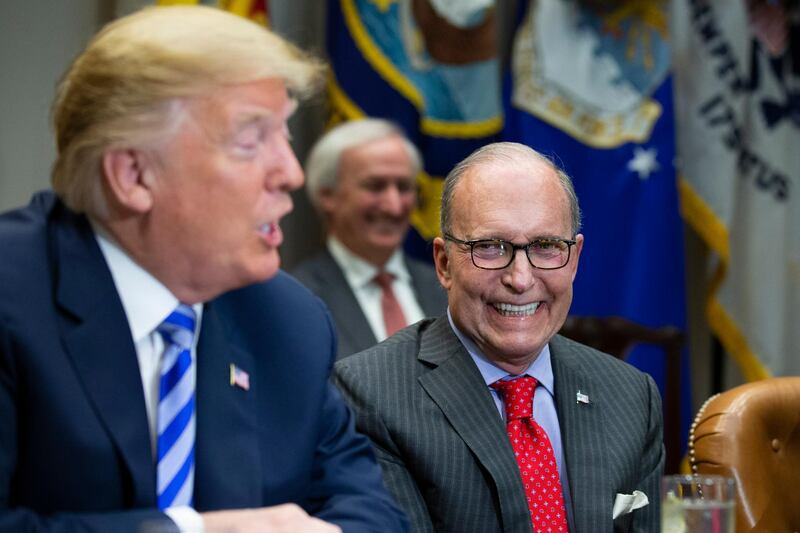China offered to reduce its trade surplus with the US by “at least $200 billion” in talks to head off a possible trade war, the director of the White House National Economic Council said.
“The number’s a good number,” Larry Kudlow, President Donald Trump’s top economic adviser, told reporters at the White House on Friday. “I think just as important, they have to lower their tariff rates, they have to lower their non-tariff barriers. We have to have a verifiable process whereby the technology transfers and the theft of intellectual property stops.”
Earlier on Friday a Chinese foreign ministry official and posts on Chinese state social media accounts disputed reports that Chinese officials had offered a $200bn reduction in its trade surplus through increased imports of American goods. According to a Trump administration official, the offer came during talks in Washington this week led by China’s Vice Premier Liu He.
In a report by The Wall Street Journal, China has agreed to buy more US goods and services, but resisted demands to cut its trade surplus with the country. China's Ministry of Commerce didn't immediately reply to a faxed enquiry.
________________
Read more:
Trump's tariffs on China to harm US firms more, institute says
Tesla creates new car firm in China
________________
Mr Kudlow confirmed the trade surplus offer but declined to detail it. “They’re showing us some substance, and that’s a sign of respect. It’s a constructive approach,” he said.
“China’s come to trade; they are meeting many of our demands,” he said. “There’s no deal yet to be sure - it’s probably going to take a while. It’s a process. But they’re coming to play. I believe they want to make a deal.”
In a sign that the Chinese government is seeking a conciliatory stance, on Friday it announced that it would end its anti-dumping and anti-subsidy investigation into imports of US sorghum, citing “public interest”. That move comes days after the restarting of a review of Qualcomm Inc’s application to acquire NXP Semiconductors.
A $200bn reduction in the U.S. trade gap with China by 2020 was on a list of demands the Trump administration made earlier this month as Treasury Secretary Steven Mnuchin led a delegation to Beijing. That mission left with little common ground with China and reports emerging of infighting among the US officials. The US merchandise trade deficit with China hit a record $375bn last year.
The US had earlier made additional demands, including a halt to subsidies and other government support for the Made in China 2025 plan that targets strategic industries from robotics to new-energy vehicles. China had made its own demands, including giving equal treatment to its investment, and warned US companies may be excluded from measures to open its economy.
The Trump administration has threatened to impose tariffs on as much as $150bn of Chinese imports to the US as tensions over trade have escalated. Mr Trump expressed doubt before his meeting with Mr Liu that China and the US would come to an agreement to avoid a damaging trade war.






